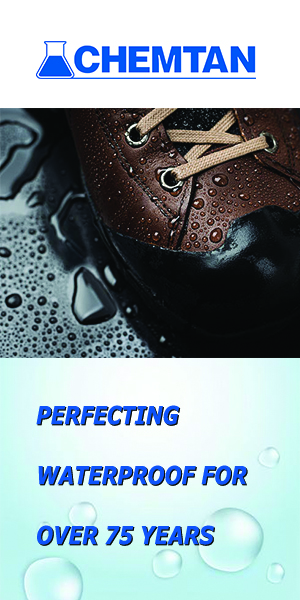Sometimes the old notions are the best

Automotive company Polestar has said it wants to break away from traditional paradigms and has described using leather in car interiors as an “old notion”. But finding a leather supplier that can meet its sustainability and traceability requirements has led it to have a change of heart.
Electric vehicle start-up Polestar once referred to the idea that high-end cars ought to have leather upholstery as an “old notion”. As part of its commitment to helping motorists transition from the combustion age to the electric age, it has marketed its standard vehicle interior choice as vegan. “Being a new player allows us to create a design language that is contemporary and doesn’t rely on traditional paradigms,” says head of design, Maximilian Missoni.
Its first model, the Polestar 1, went into production in 2019, with the Polestar 2 following in 2020. In its early public announcements about these cars, it made a series of comments that did little to boost the confidence of automotive leather suppliers. Mr Missoni insisted the Gothenburg-based company was challenging all the old notions of “what premium means in the car industry,” and that vegan WeaveTech upholstery and reconstructed wood “instead of leather and chrome” in the Polestar 2 was part of that. This model went on to win Best of the Best in Product Design at the 2021 Red Dot Awards.
Upgrades, at extra cost
However, this spring, Polestar published a series of “sustainability upgrades” for the Polestar 2 and has made it clear that leather upholstery is one of the options. Specifically, it says customers can choose zinc-coloured, ventilated nappa leather in an eye-catching ‘broken chevron’ design. It also says customers will have to pay 50,000 Swedish kronor (or €4,500) extra if they opt for leather. This means that, if leather is synonymous with “the old notions”, it is still something that Polestar thinks will drive enough desire among customers to convince them to pay a handsome premium for it. “One thing that is not changing as we go from combustion to electric,” according to chief executive, Thomas Ingenlath, “is that cars are a highly emotional affair for us humans.”
Head of sustainability, Fredrika Klarén, says the company has put leather into the upgrade mix for the Polestar 2 and is likely to keep it as part of the picture for future models because it has found “improved nappa leather upholstery with greater sustainability credentials”. She explains: “We require that all leather used in Polestar products must live up to the strictest standards on animal welfare and the Five Freedoms, along with being fully traceable and chrome-free.” She says the company has found a supplier of leather that can fulfil all of these requirements: Bridge of Weir, part of the Scottish Leather Group (SLG).
Towards a climate-neutral car
Transparency, Ms Klarén goes on to say, plays a key role in Polestar’s sustainability work. It has published a lifecycle assessment (LCA) for the Polestar 2, showing, she insists, that its climate impact is half that of a petrol-powered car. “We have set ourselves a moon-shot goal of creating a climate-neutral car by 2030,” she continues. “We will not use offsets, but instead focus on eliminating supply chain emissions and on eliminating emissions from each of the 20,000-plus components that go into a single car. Circular solutions, energy efficiency, renewable energy sources and carbon-capture technologies will all play a pivotal part. It’s all about innovation, research, advanced engineering and collaboration.”
Innovation, research, advanced engineering and collaboration, along with a few old notions, are what have helped Bridge of Weir convince Polestar that leather, too, deserves to be part of the path to climate-neutral. SLG says that, for Bridge of Weir and the other leather manufacturing companies in the group, traceability begins in the fields of the suppliers from whom it sources cattle hides and ends only when its customers have received the finished leather they want to use in their products. “It is paramount for leather buyers to have full access to information,” its hide procurement director, Gareth Scott, has said. “They want to know where their leather comes from, how the animals that provide the raw material were cared for, how the hide was harvested, treated and processed, and even the impact that supply chain shipping has on the environment.”
For some years now, SLG has been working on a traceability system that will enable it to laser tag and code all hides at the point of origin. Individual identification codes will remain with the hide throughout the tanning processes. Among the reassurances this will give to customers including Polestar is confirmation that the leather they are purchasing is from hides from UK farms that abide by the Five Freedoms Ms Klarén refers to.
Five Freedoms
The Five Freedoms Principles are that the animals from which we obtain meat, milk and a range of by-products, including hides, must have:
1. Freedom from hunger and thirst
2. Freedom from discomfort
3. Freedom from pain, injury and disease
4. Freedom to express normal behaviour
5. Freedom from fear and distress
Polestar also admires the patented, circular manufacturing process that SLG has in place at its Bridge of Weir tannery. The leather producer has completed its own LCA and now uses the results to present its collections as the lowest carbon-intensity leather available to the automotive industry worldwide. Polestar is one of a number of car companies that have put their trust in this.
Scottish Leather Group’s commitment to transparency has shed light on the sustainability benefits of leather for Polestar.
All Credits: Polestar






























